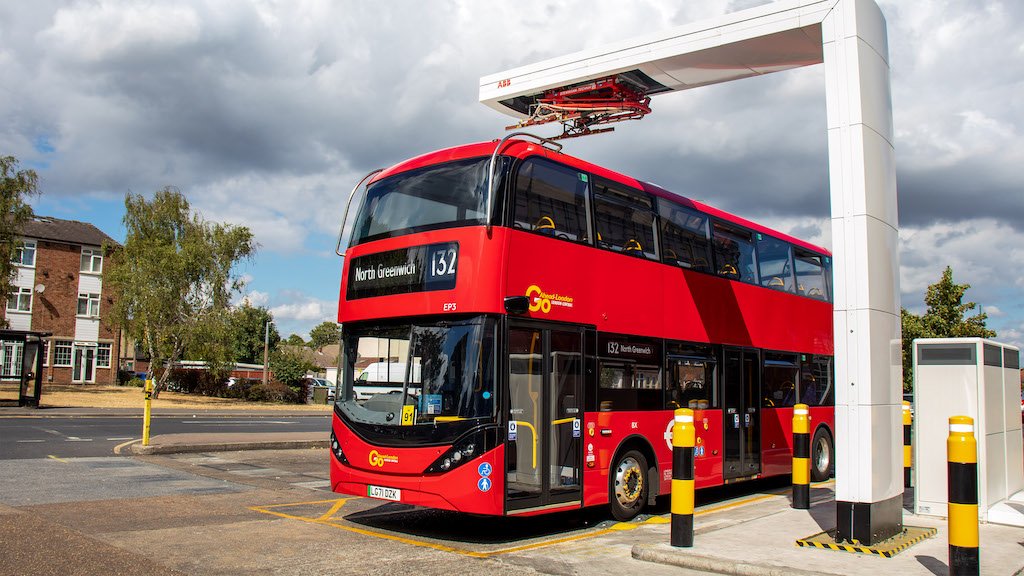TfL installs rapid, wireless charging technology for all-electric bus route
Transport for London has installed innovative pantograph technology at its Bexleyheath bus garage to give buses a quick top-up charge on the all-electric Route 132 that runs between North Greenwich and Bexleyheath.
The result of a collaboration between the BYD ADL partnership, Go-Ahead London and EO Charging, in conjunction with ABB, the pantograph is an arm-like structure that attaches itself to the roof to deliver a quick, high-power charge to buses.
The buses, which are conventionally charged overnight, receive a high-power current through the pantograph multiple times throughout the day for a power boost; this is known as opportunity charging.
Each top-up takes less than 10 minutes, allowing buses to travel further each day. The short top-up time and longer distance each bus can cover means fewer buses are needed to provide the same high level of service, allowing resources to be reinvested into other areas of the network.
From next year opportunity charging with pantographs will be trialled on the 15-mile Route 358 between Crystal Palace and Orpington, which is one of London's longest.
A standard garage charge alone would not sustain a zero-emission bus the entire day. Due to the length of the route, a pantograph at each end of the route will mean buses receive a quick boost on the spot. The 358 route will also benefit from new buses that resemble a tram, with enhanced customer features, the latest bus safety features and retaining the iconic red livery.
Louise Cheeseman, TfL's Director of Bus, said, "The threats of toxic air, climate change and congestion are becoming clearer every day, and it's vital that we find technical solutions that help us run clean, green services that get Londoners where they need to be. The installation of the rapid pantograph charging for Route 132 is a key step to help us get zero-emission buses running on routes all across London."
John Trayner, Managing Director of the route’s operator Go-Ahead London added, "Route 132 is the latest in a long line of pioneering zero emission firsts for Go-Ahead London. Working innovatively with our supply chain, we have extended vehicle range by harnessing technology, in the process reducing the overall number of buses required to provide service and delivering significant cost savings.
TfL is aiming for its 9,000 buses to be zero-emission by as early as 2030, subject to Government funding.

